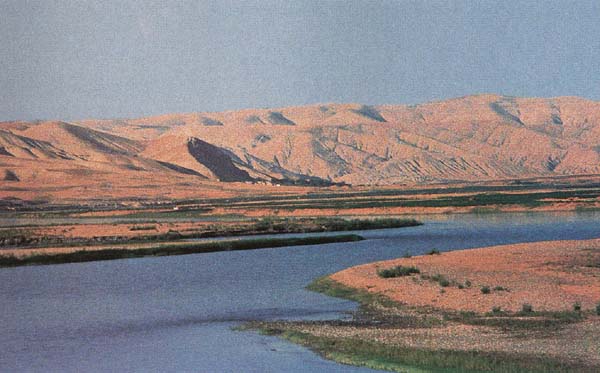Image Details

Marie-Henriette Gates
Upper Euphrates River. In the Bible, Abraham’s kin settle near Haran (Genesis 11:31), just south of the site in southern Turkey where the photo was shot. The names of Abraham’s father (Terah), grandfather (Nahor) and great-grandfather (Serug) are place-names referring to sites in the plain between the Euphrates and Habur rivers. Abraham’s son (Isaac) and grandson (Jacob) both take wives from the Haran region.
In Genesis, this place so strongly associated with the origins of the patriarchs is called Aram (Aramea). But from the time of David, the Arameans were enemies of the Israelites. Why, then, would the Biblical writers trace their ancestry to their hated enemies?
Ronald Hendel’s answer is simple: Because ancient traditions did indeed trace the patriarchs’ origins to the region of Haran. Although earlier, in the Middle and Late Bronze Ages (c. 2000 to 1200 B.C.E.), this area was Amorite, the Biblical writers simply referred to it by the name that was current at the time they wrote—calling it Aramea. Thus the patriarchal narratives in Genesis do show signs of authorial or editorial updatings, but they also accurately record ancient memories, such as the tradition tracing the Israelites’ origins to the region of the upper Euphrates.
